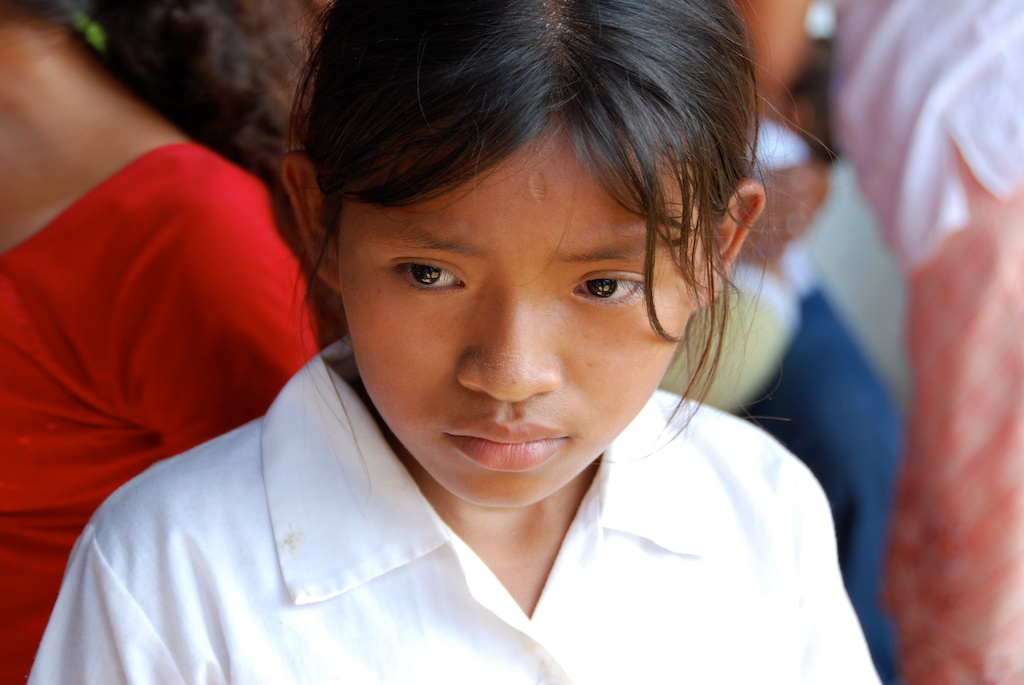On March 8, 2017, an especially meaningful day of celebration of the International Women’s Day, organizations supporting children’s rights in Guatemala were hit by brutal news: 41 girls and adolescents who were sent by court order to a youth shelter for their protection, died there in a horrific fire. Five public servants were recently arrested for this tragedy, including the child rights defender at the youth shelter, who was inexplicably charged and imprisoned at the same level as the police officer who was directly responsible for the deaths. On April 26, a young man ran over a group of students from a national institute who were demanding their right to quality education—11 adolescents were severely injured and a young girl died after having her arm and leg amputated. Yet these tragedies are not uncommon: Guatemala has the sixth highest rate of child murder in the world, with high rates of impunity for these crimes (all the countries ranked above it are also in Latin America). In addition, hundreds of children have been orphaned due to rising murder rates of mothers and fathers.
Children desperately need protection in Guatemala, and yet the defenders of their rights are constantly attacked, threatened, and isolated. Consider the following examples that never became news: members of a Guatemalan volunteer group for the protection of children identified and reported a child trafficking network and soon after received threats of death and assault. A public defender, who accompanied the legal process and psychosocial treatment of a girl raped by her father, received threats from the prison where the father was serving his sentence. In addition, a project coordinator at a children’s rights NGO was kidnapped, though she was eventually found safe due to the intervention of a foreign embassy. This violence, however, is not a new issue: as far back as 2001, Human Rights Watch was condemning high rates of attacks on rights defenders, particularly those protecting children. But little has been done, and the problem persists.
Flickr/Pan American Health Organization/CC BY-ND 2.0 (Some Rights Reserved).
The main threat to young people in Guatemala is the high level of impunity for crimes against children and adolescents.
This lack of action is at least partially because the defenders themselves are hesitant to report violence perpetrated against them, so the problem remains invisible. Moreover, they do not receive full support in most cases because while Guatemala has a lengthy track record of violating its own citizens’ human rights, defenders of other types of rights (such as environmental rights, indigenous rights, etc.) have more political weight in the national and international arena. Children, despite making up more than half of the population, rank lowest on the government’s priority list and only appear in political discourse when it’s convenient. Ongoing power struggles between the Guatemalan oligarchy and the “narco elite” have meant that politicians are focused on issues relevant to consolidating and protecting power, and children do not factor into this dynamic at all. When it comes to government investments and actual policy changes, children and child rights defenders disappear off the radar.
All of these events have a strong psychosocial impact on the advocates of children’s rights. Because they are involved in challenging situations—sometimes more so than any other rights issues due to constantly witnessing the suffering and abuse of children. These situations range from collecting testimonies of enormous emotional weight, to confronting the impunity of public institutions whose mission is to protect the rights of boys and girls. Such stress leaves them with the burden of having to cope alone, without any support, and with constant threats to their safety while the government does nothing to protect them.
"4,485 human rights violations were registered in Guatemala between 2000 and 2015, an average of 280 violations per year."
Violations against children’s rights advocates are also poorly documented by the very organizations that should identify and follow-up on threats and intimidating actions—such as UDEFEGUA (Unidad de Protección a Defensoras y Defensores de Derechos Humanos, Guatemala). According to UDEFEGUA, 4,485 human rights violations were registered in Guatemala between 2000 and 2015, an average of 280 violations per year. Most of them were against males (55.5%), during the term of former president Otto Pérez (49%), and in the metropolitan region (52%). But only one single complaint was filed in 2014 for intimidation against a child-protection NGO. In 2015, seven complaints were filed, one for threats against the daughter of a children’s advocate, two for defamation of an NGO, and another four for trespassing into the office of another organization, either to steal information or to cause insecurity and fear. These official complaints, though, are not even close to all the threats against children’s rights defenders. Arguably, this underreporting is partly due to a culture of fear: such complaints often lead to a violent reaction against children’s advocates throughout the country.
Who or what can change this disregard for children and those who protect them? As UNICEF has noted, the main threat to young people in Guatemala is the high level of impunity for crimes against children and adolescents. The same impunity applies to crimes against child and youth rights defenders. In Guatemala’s violent and corrupt society, many of those with the power to change policy cannot be bothered with children’s issues. For this to change, advocates must learn to better publicize their work and to engage policymakers in difficult discussions on what must take priority. International NGOs and embassies with influence could also help, providing tools and training to improve advocacy, build resilience, and build support networks for mental health. To date, this support has been intermittent and insufficient. For change to truly happen, the pressure on the Guatemalan government must be relentless. This country needs leaders who recognize that children are the future of the country, not mere annoyances to be cast off. Only then will children and their advocates be allocated proper resources and recognition.

